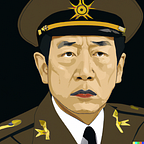Hirohito is the emperor with the longest reign in Japanese history, reigning in (1926–1989). Hirohito was also one of the important figures during World War II and the rebuilding of Japan.
Before ascending the throne he was known as Prince Michi (迪宮, Michi-no-Miya). His reign as emperor is known as the Showa era, which means peaceful, bright-minded. But ironically, just at that time, Japan was involved in a war against RRC and finally in World War II.
The Manchurian Incident In Hirohito’s era, the Manchurian Incident or Mukden Incident occurred. This was an incident that occurred in South Manchuria when a Japanese-owned railroad was bombed by a Japanese junior officer. This attack is a strategy so that Japan can invade China. Throughout the early 20th century, Japan had maintained special rights in Manchuria. They also felt that the neutrality of the territory was necessary for the defense of the Japanese colonies. Japan was worried that their position in Manchuria would be threatened by China. Read also: The 4 Most Influential Japanese Emperors On the night of September 18, 1931, Japanese troops used the pretext of an explosion along the Japanese-controlled South Manchuria Railway to occupy Mukden. Although this attack did not damage the railway line, Japan put up a fight against what it considered a “Chinese attack”. Japanese troops began to fire artillery into the Chinese garrison the next day. Within five months of the Mukden Incident, the Japanese imperial army had invaded all major cities in Liaoning, Jilin, and Heilongjiang provinces.
The Hirohito era was also the Nanking Incident, which took place from December 13, 1937 to January 1938. The Nanking Incident was a mass murder and mass rape by Japanese soldiers against the residents of Nanking, which was the capital of China at that time. During the period of this incident, between 40,000 and more than 300,000 Chinese civilians were killed by the Japanese. Survivors of the Japanese invasion of China did not only occur among men, but also women. At least 20,000 women and girls were raped by Japanese soldiers.
Pearl Harbor On December 7, 1941, hundreds of Japanese aircraft attacked the United States Naval Base at Pearl Harbor, Hawaii. Two hours after the bombs were detonated, 2,402 Americans were killed and 1,282 injured. The attack on Pearl Harbor sparked the anger of the US. US congressmen debated whether the US would declare war or not. This war was not only fought against Japan, but also Germany and Italy. Finally, US President Franklin Delano Roosevelet convinced the US Congress to include his country in World War II. The Japanese attack on the US itself was aimed at preventing the US Pacific fleet from taking military action against the Japanese Empire. Read also: History of Japan: From the Land of the Rising Sun to the Modern Era Japanese leaders do not want the United States to intervene too much in its actions in the war in Asia Pacific. Pearl Harbor was attacked by about 300 Japanese warplanes, both bombers and torpedo planes. A total of 188 US aircraft, three cruisers, three destroyers, one anti-aircraft training ship and one minelayer were destroyed. Japan’s action received support from the axis countries, Germany and Italy.
Emperor Hirohito died on January 7, 1989 due to cancer of the duodenum. His state funeral was attended by world leaders including United States President George Bush, French President Francois Mitterand, HRH Duke of Edinburgh from England, and King HM Baudouin from Belgium, on February 24, 1989. His body was buried in the Mausoleum with Musashino, beside Emperor Taisho’s tomb. His position is held by Crown Prince Akihito.
